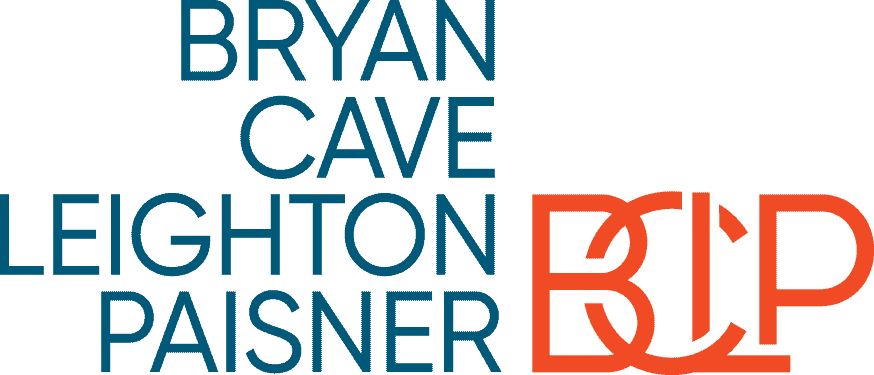
Gaining a Competitive Advantage through Regtech
Brought to you by Bryan Cave Leighton Paisner

The newly-coined term “regtech,” which is a combination of regulation and technology, is a useful concept to a highly-regulated industry like banking. Regtech is distinct from fintech in that regtech refers to a combination of regulatory strategies that a regulated business can use to secure a business advantage.
Banks sail on a sea of pervasive regulation. We see several ways that banks can chart a new course on this sea and make more money through regulatory innovation, beginning with the use of technology to make regulatory compliance more efficient. Most of the literature sees regtech as a single idea: using technology to drive efficiency in regulatory compliance. We think that such efficiencies are a very important part of regtech–but are only part of the story. The topic of compliance efficiency has several elements:
- Identify areas where the bank’s compliance oversight is not effective–typically because human resources have the wrong priorities or are spread too thin. Many institutions risk fines and enforcement actions and put their long-term viability at risk by tolerating gaps in their compliance oversight–and yet they still manage to spend too much.
- Identify a technology provider whose software and services are a good fit for your bank’s existing and projected growth.
- Communicate with regulators to spot any regulatory objections to the technology provider and the overall strategy as early as possible in the process.
For example, the forward publishing function in software available in HotDocs, a popular provider of document assembly technology, allows banks and other financial institutions to maintain their own lending or operational forms. This means that changes to an institution’s form documents can be applied prior to new regulations coming in and accurate, updated templates can be made available to document users on the legally required date. Version control ensures that only the most up to date template is available for use, negating the risk of any old and non-compliant documents being issued. Such an automated system for updating forms based on regulatory changes is a classic example of technology making a compliance task faster, more efficient and effective.
Marrying technology to compliance will result in a much more effective compliance team. They can use their time to review dashboards, clear exceptions and otherwise exercise their experience and judgment instead of wasting time on rote or repetitive busywork. It also makes possible much more valuable internal and external compliance audits as well as meaningful reports to the bank’s board of directors on operational and compliance risks. Being smart in this area of regtech is mission critical for community banks and financial technology companies.
Another new approach is the creation and exploitation of intellectual property based on regulatory insights. Many times, figuring out a way to offer a new product or service, or offer an existing product in in a new way, depends on finding a regulatory interpretation that allows the innovation to proceed.—•?_ There is precedent for patenting new regulatory loopholes, including tax-related loopholes discovered and patented by CPAs and others. Some examples include a derivatives-related patent application, in which one of the authors of this article was a co-inventor, as well as several patents obtained by the consulting firm Promontory Financial, which are based on regulatory insights. Those patents have made possible new business processes and services.
A financial institution that has a flash of insight on how to improve an existing process or develop a new innovation should carefully consider seeking a patent or otherwise surrounding the regulatory insight with as much intellectual property protection as possible. We think that doing so is another great way to use regtech to get a business advantage.
Most banks and financial technology companies have important choices in deciding how and by whom they will be regulated in a particular jurisdiction. If you know you want to be a depository institution, you still need to choose (1) a state or national charter and (2) if a state charter, the chartering state; (3) the type of charter including a commercial bank, savings bank, savings and loan or credit union; and (4) depending on what charter you choose, whether to be a member institution in the Federal Reserve. Also available are a few “bank-lite” charters, such as an industrial loan company (ILC) charter that is available in seven states including Utah, or a trust company charter from one of several states. Some banks would do well to carefully consider changing their charter—and in the process, their regulator–to something that better supports their business goals.
For a business model based on lending money, there are the bank models mentioned above as well as a range of non-depository charters, such as the ILC charter and other state lending licenses. Many of these are only valid in the issuing state, which means that building a national business in the U.S. using multiple state lending licenses can quickly become a complex endeavor. Similarly, for a business model premised on moving money, including money transmission, payments, stored value cards, wallets and remittances to name a few, there is a similar choice between a web of state licenses or a carefully-crafted bank partnership, a blend of the two, or possibly one of the new federal charters being discussed by the Office of the Comptroller of the Currency.
Rent-a-charter is a derogatory term for a partnership between a bank or other chartered or non-chartered institution in which the bank lends its name (and little else) to the other party. Such an arrangement can lead to allegations that the non-chartered party is the “de facto” lender or other real party in interest and that the bank is not exercising sufficient oversight or control over the process. However, bank partnerships are crucial in the financial world and most of the time a business model can be built on a properly-structured bank partnership. The details of the partnership are extremely important and we think rise to the level of true regtech.
These are foundational choices with numerous and conflicting considerations. However, the business that shrewdly chooses its chartering path (and therefore its regulators) can gain a crucial edge on its competitors. For example, some financial technology companies are learning that some business models actually face a more complex and expensive compliance burden by not being a bank than they would have experienced by acquiring a bank charter. Thus, we think that the initial and ongoing chartering strategy is an element of regtech.
And finally, we think good old-fashioned lobbying is properly considered part of regtech. Think about the varied tactics used in Uber and Lyft’s efforts to beat back challenges to their shared ride business model. A large company like Uber, which has immense popularity with consumers, can use that popularity in its lobbying and negotiation with regulators. Might can make right.
For most other companies that lack the market clout of an Uber, lobbying can take more traditional forms such as convincing a range of stakeholders and legislators that statutory reform is necessary and appropriate to achieve a broader social good. Think about recent California legislation exempting free credit building loans (low or no-interest loans designed to help people build a good credit score) from finance lender legislation. Or think about the Consumer Financial Protection Bureau’s current advertising campaign—an effort ostensibly designed to raise consumer awareness of the bureau’s services that also helps build political support during an election year for a controversial agency.
Other situations are better suited for a quiet one-on-one approach. Sometimes this can result in a published interpretation or no-action letter that expressly blesses the proposed innovation. Probably more frequently, a no-names inquiry through lawyers or other representatives can get equally valuable information that has the added benefit of not being publicly available to competitors. With good faith around the key regulatory elements of a proposed innovation, a company can be first to market with a new product or service.
In summary, we think that regtech is not only useful in sparking thought and conversations in the financial industry, it may even spur innovation and profitability.


